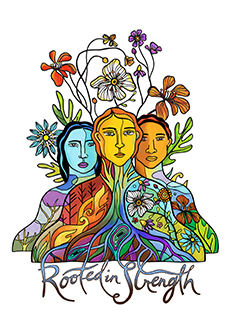Trees have long been a symbol of strength and connectedness, and we can learn a great deal from them. Especially now.

Trees connect with and depend on each other. They communicate when danger arises; transferring water and carbon as an energy source through massive root networks that keep them inextricably linked. Older trees link to saplings to facilitate their growth. All of these connections help a forest recover when its ecosystem is disturbed. You can learn more in this fascinating interview with Dr. Suzanne Simard, professor of forest ecology at the University of British Columbia.
I work in the pediatric ICU at Children’s Hospital of Colorado. Every day I see similar connections. A remarkable symbiosis extends among individual team members and across the organization. Much like the wise trees, we share energy and communicate with each other.

Wise experienced team members look after newer colleagues and help them grow. Newer colleagues open our minds to new ways of doing things. We are interdependent and sustain each other when familiar patterns and routines are disturbed. It’s a mutually beneficial relationship between individuals and groups that requires collaboration and two-way communication.
One of the lessons I learned from Simard is the importance of communicating to others what is happening and what we need from them. I talk with fellow nurses from across the country and read their compelling social media posts — about relentless workloads, the escalating number of unusually sick patients, staffing shortages, salary inequity, burnout and sometimes hopelessness. These unrelenting challenges underscore the importance of communicating to others without ambiguity what we see and what we need from them.
What will keep us rooted in strength like venerable trees that have thrived despite great fires and droughts that have threatened their vitality? What will allow us — and the healthcare system — to emerge from our current trauma stronger and more resilient in the future? We can’t assume others know. So we’re obligated to help them learn so we can work together for change.
What would I tell others?
- Listen. Listen to frontline nurses and others so you understand what they have been experiencing.
- I would tell them our nation’s healthcare system — in particular the nurses, physicians and other team members who make healthcare happen — are truly near a breaking point. Sadly, the system’s weaknesses are not new. This first-time-in-100-years public health emergency has heightened and exposed them. It’s time to make lasting changes, so these dangerous vulnerabilities cannot happen again.
- I would thank our healthcare leaders for leading. We want to be your partners, I’d tell them, not just to patch our systems but to make them better. I would ask them to show us that we are seen. To honor the trauma we have been through and continue to experience. To affirm their commitment to work with us in making long overdue system changes that will last.
- I would remind our legislators and regulators that nothing is more fundamental to a nation’s health than the strength of its healthcare system. Invest in it. Unburden it. Work with the professionals who know this business — patient care — to create a system truly driven by what patients and their families need. Not the interests of those who stand to gain status or profits.
- And then the American public. I would tell my family, friends, neighbors and co-workers — anyone I encounter — that this is a public health emergency and only the public can end it. I’d ask them to help others learn from science. Unvaccinated people are in danger. Vaccines work. Get vaccinated. Mask when appropriate. This is how we will transition from a crisis to life beyond this pandemic.
The rich symbiosis of every system — from the forest to the health system — requires two-way communication to generate energy so its members can thrive. Let’s do our part. Help others see the view through our lens at the sacred intersection where patients and caregivers meet.
How do you offer yourself as part of the solution? How do you tell your colleagues and leaders about the fundamental changes we need to deliver optimal care? Tell me at RootedInStrength@aacn.org.